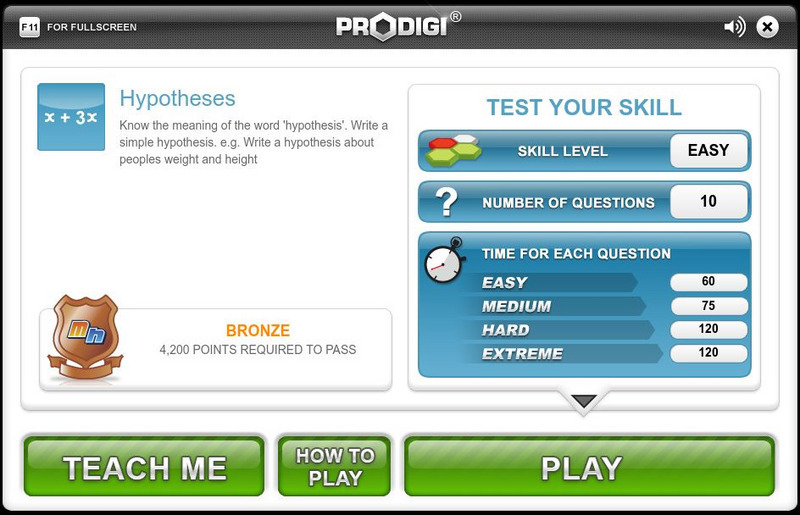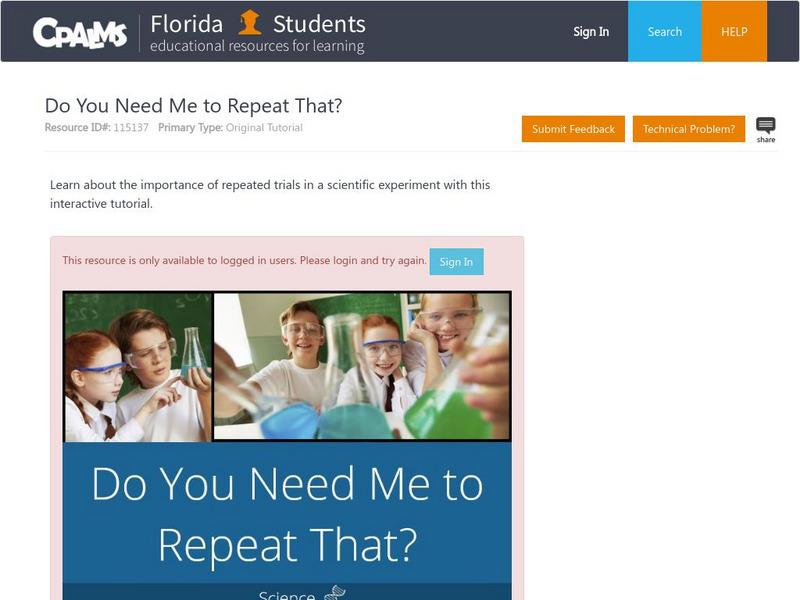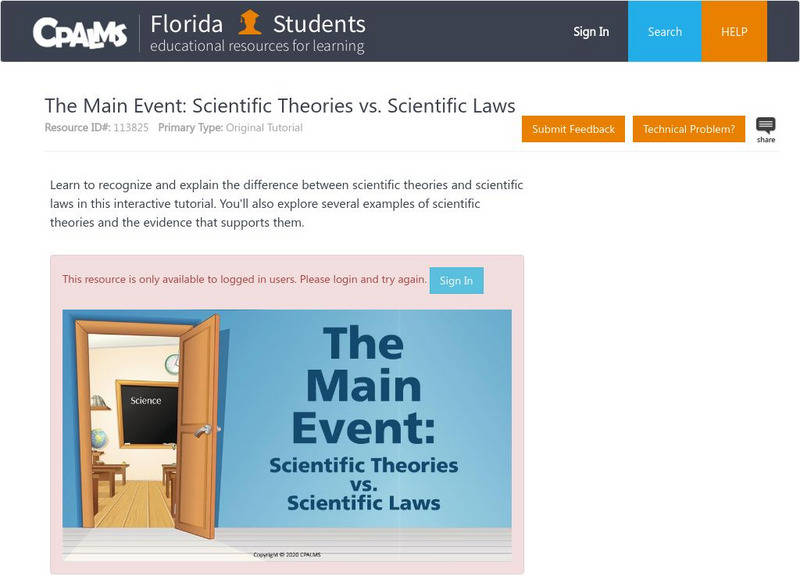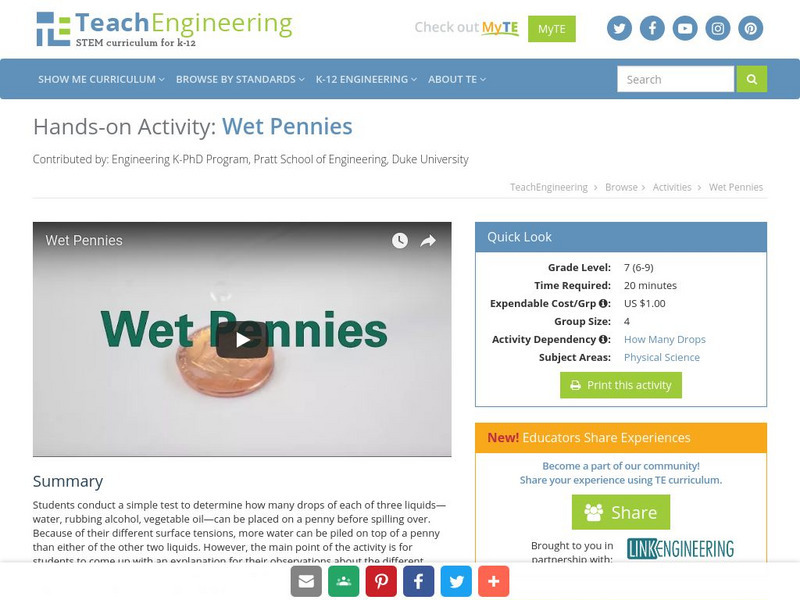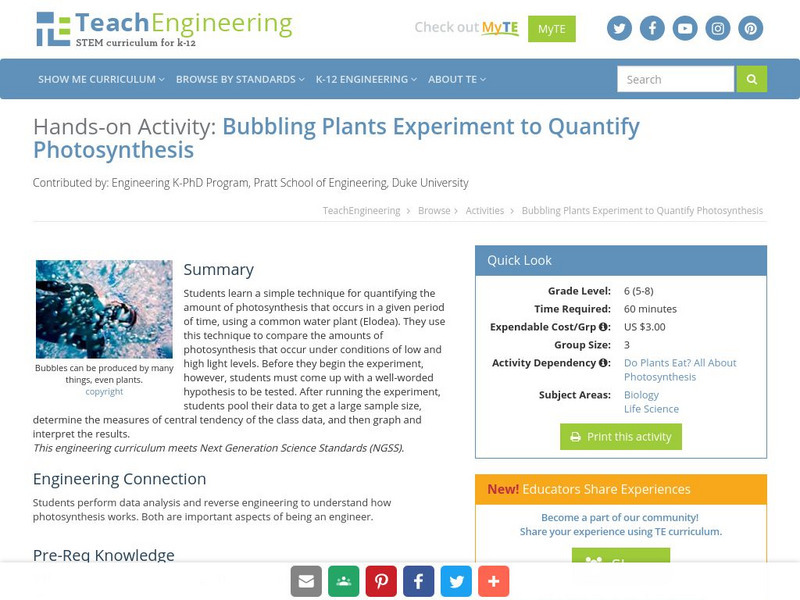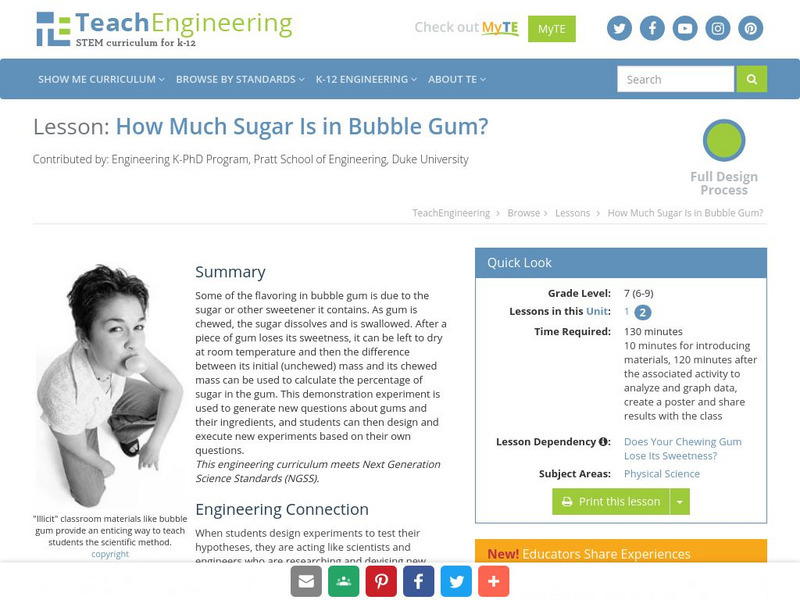University of California
Understanding Science: The Core of Science: Relating Evidence and Ideas
Learn that the real process of science proceeds at multiple levels and sorts through many ideas, retaining and building upon those that work, and relating the evidence discovered with scientific ideas.
Other
Science Fair Primer
An experienced science teacher shares detailed information regarding how students develop science fair projects. In addition to the key steps involved in working through a project, you will find judging guidelines and links to other...
Other
College of the Holy Cross: The Logic of Scientific Reasoning [Pdf]
Explore the idea of the logic of scientific reasoning with this discussion of how science, thinking, and reasoning relate to one another.
McGraw Hill
Glencoe Biology: Methods of Science: Self Check Quiz
Take this self-checking, five question practice quiz over various methods of science.
Annenberg Foundation
Annenberg Learner: Journey North: Reading Strategies: Identify Author's Viewpoint
This reading resource discusses the strategy of identifying an author's viewpoint. A list of guiding questions is provided to help students as they analyze the author's viewpoint.
Blackdog Media
Classic Reader: The Hypotheses of Failure by O. Henry
Classic Reader provides numerous classic short stories from famous authors. One work is "The Hypotheses of Failure," a story written by the author, O. Henry.
University of California
Understanding Evolution: Nature of Science
Understand the processes behind the nature of science.
National Health Museum
Access Excellence: Writing Hypotheses
This informative page describes the true purposes of the hypothesis and how it should be used. Not only shows how they are written, but also helps students figure out the dependent versus independent variable.
National Health Museum
Access Excellence: In Search of Real Science
The author of this paper discusses some of the challenges and problems encountered when teaching science and the scientific method to students. He provides links for some sample lessons. Site by Access Excellence.
University of Washington
Washington U: Model for Conducting Scientific Research
This page outlines the scientific method, step by step.
Scholastic
Scholastic: Study Jams! Science: Scientific Inquiry: Scientific Methods
A video that explains the steps involved in the scientific method. Includes a karaoke song with lyrics, a quiz to test students' knowledge, and vocabulary definitions.
Microsoft
Microsoft Education Lesson Plan: Candy Is Dandy
Explore color distribution of M&M candies using this detailed lesson plan. An engaging integrated lesson that requires understanding of spreadsheets and formulas, and logical reasoning. Links to related websites.
Mangahigh
Mangahigh: Data: Hypotheses
Students learn about the concept of hypothesis by exploring a tutorial. They can then test their knowledge by taking a ten question assessment that increases in difficulty as they correctly answer questions.
Mangahigh
Mangahigh: Data: Test a Hypothesis
Students explore an interactive tutorial on testing hypothesis and then practice their knowledge by attempting ten questions that increase in difficulty level.
NASA
Nasa: Space Place: What Is Science?
Students learn abut scientific investigation and the difference between hypotheses and theories.
CK-12 Foundation
Ck 12: Earth Science: Testing Hypotheses
[Free Registration/Login may be required to access all resource tools.] Learn the steps of how to test hypotheses.
CK-12 Foundation
Ck 12: Statistics: Null and Alternative Hypotheses
[Free Registration/Login may be required to access all resource tools.] This Concept introduces students to developing the null and alternative hypotheses.
CPALMS
Florida State University Cpalms: Florida Students: Do You Need Me to Repeat That?
Learn how repeated trials during experimentation leads to more reliable results.
CPALMS
Florida State University Cpalms: Florida Students: Scientific Laws
Scientific law is defined and contrasted to societal laws. Examples are given.
CPALMS
Florida State University Cpalms: Florida Students: Scientific Laws and Theories
Differentiate between scientific laws and theories. Identify examples of scientific theories and use evidence to support them.
TeachEngineering
Teach Engineering: Wet Pennies
Students conduct a simple test to determine how many drops of each of three liquids can be placed on a penny before spilling over. The three liquids are water, rubbing alcohol, and vegetable oil; because of their different surface...
TeachEngineering
Teach Engineering: Bubbling Plants
Students learn a simple technique for quantifying the amount of photosynthesis that occurs in a given period of time, using a common water plant (Elodea). They can use this technique to compare the amounts of photosynthesis that occur...
TeachEngineering
Teach Engineering: How Much Sugar Is in Bubble Gum?
Most of the flavoring in gum is due to the sugar or other sweetener it contains. As gum is chewed, the sugar dissolves and is swallowed. After a piece of gum loses its flavor, it can be left to dry at room temperature and then the...
CK-12 Foundation
Ck 12: Biology: Scientific Theories
[Free Registration/Login may be required to access all resource tools.] Covers scientific theory and scientific laws.


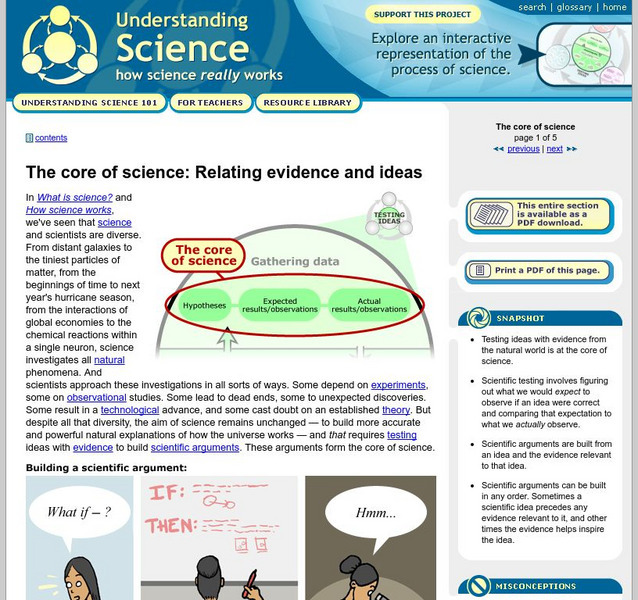

![College of the Holy Cross: The Logic of Scientific Reasoning [Pdf] eBook College of the Holy Cross: The Logic of Scientific Reasoning [Pdf] eBook](https://d15y2dacu3jp90.cloudfront.net/images/attachment_defaults/resource/large/FPO-knovation.png)






